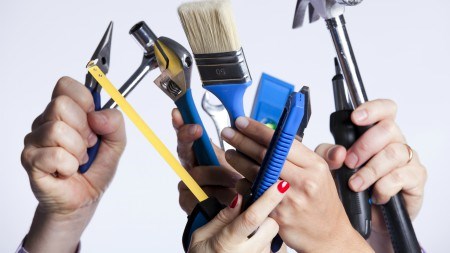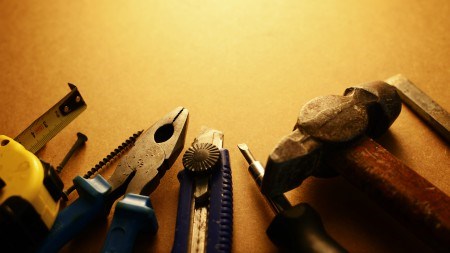Helping you stay on track with your home maintenance tasks, Private Property has put together this easy to use home maintenance calendar.
Make time for maintenance
The journey of owning your home doesn’t end when you move in. Instead, your journey of owning a home has only just begun. Ensuring you stay on top of your home maintenance tasks is key, as this helps to preserve your property value and, in many respects, increase it. Moreover, making sure that you stay on top of your home maintenance task list is important for ensuring the safety of your home, and helping you continue to make happy memories within your home.
Call in the professionals
Many of the basic home maintenance tasks can be undertaken in a DIY manner, but there’s a Big Important Rule we recommend to everyone: If it’s something electrical, or something you’ve never done before, call in the professionals. It is worth every cent - and every accident that can be avoided - to rather hire a professional to handle the home maintenance tasks you can’t.
Home maintenance inspection
It’s often also preferable to hire a professional inspection service for your home. Whether it’s a qualified inspector to check for water leaks, or a certified inspector who can advise you on what to do about shifting foundations, it’s always better to hire a professional.
Your walls and floors
Conducting an annual inspection of your home’s walls and floors is vitally important, as part of your annual home maintenance calendar. Cracks in your walls, tiles, floors, or ceilings, can be indicative of a far larger problem underneath or within your home. Make sure you check your walls and floors at least once a year. We recommend:
- Taking a walk around the exterior of your home, to check for cracks in the walls. While you’re at it, check your fence or boundary walls too. Do this at least once a year, and call in the professionals if you find a crack. Cracks in your walls, fencing, or boundary walls, can indicate a shifting of your foundations, soil slippage, or other issues.
- Closely inspecting your home’s floors, tiles, and carpets. Cracks in your floor or tiles can be a sign that all is not well with your home’s foundations. Making sure your home’s floors stay in tip top shape can also help to prevent accidents and enhance the appearance of your home.
Your paintwork and exterior fittings
Depending on your location, climate, and your home’s circumstances, you should look to repaint the exterior walls of your home every 5 to 10 years. But it’s not only the paint we worry about when examining the exterior of your home. Wooden window frames, and wood fittings, are highly susceptible to the outside elements and possible infestations. Make sure you check your paintwork, and all fittings, at least once a year. That way, you’ll know when to schedule in some time for an all-round paint job and repairs.
Your drains and gutters
Clearing your home’s drains and gutters is an essential home maintenance task, that can be scheduled according to season. Ideally, you should be tackling this home maintenance task at least twice a year; before the most extreme seasons of the year: summer and winter. Clearing your drains and gutters of leaves, debris, and last year’s forgotten frisbee is essential. If possible, look towards installing drain covers and gutter guards, as these make this home maintenance task much easier to do.
Your home alarm system
At least once a year, you should be conducting an alarm system test in collaboration with your armed response or home security service provider. Call them to schedule a test, and make sure your battery, control panel, sensors, and beams are all in good working order. By working in partnership with your security service provider, you can rest assured that all is in working order.
Your windows and doors
Windows and doors are considered high stress fittings of your home, as they are - usually - constantly in use. We recommend, at least, an annual check and inspection of:
- Your windows: Check every window pane for cracks, and make sure every window is well sealed. Cracked putty, or perished seals, must be replaced as soon as possible. Acting on these little faults and rectifying them helps to ensure your home stays well insulated and secure.
- Your doors: Check your door frames, locks, and knobs, at least once a year. Oh, and make sure you can find the keys for every door both in and around your home. You’ll be amazed at just how quickly keys get lost!
Don’t forget to look up
At least once a year, take a purposeful walk through each room of your home, and look up. Yes, looking up is an important home maintenance task, and it could save you oodles of money in the long run. Small spots, holes, cracks, or stains, in your ceiling could indicate a water leak, a slipped roof tile, or other problem in the eaves and beams above. If you spot anything sinister, call in a professional inspection team, to check it out. Simply by looking up, you could save yourself enormous hassle and a bundle of money.
Your taps and sinks
Checking the plugs, seals, and taps of every sink, basin, bath, and shower in your home is important, as this can help you to spot leaks with ease. It’ll also save you lots of money in the long run. But, while you’re checking every tap, don’t forget to check any taps in your garden too. All too often, a dripping outdoor tap gets left undetected. Similarly, make sure every toilet is flushing correctly, and ensure that there are no sneaky leaks anywhere in your bathrooms.
Your swimming pool
Taking care of your swimming pool is a weekly home maintenance task, but giving it a good inspection should be done at least twice a year. Check your pool surface and walls for any cracks, and make sure your pump and accessories are in good working order. If anything needs replacing, don’t wait on this one - the longer you wait to replace pool accessories, the more money you’ll spend in the long run.
Your electrical circuits
This particular home maintenance task can’t be done enough. But, checking the electrical circuits and wiring of your home should be done by a certified electrician or home inspection specialist. If you spot a faulty plug or dodgy switch, don’t delay in calling in an electrician to sort it out. If you do want to DIY this task, just to make sure everything is in working order, check every plug and switch in your home at least twice a year.



